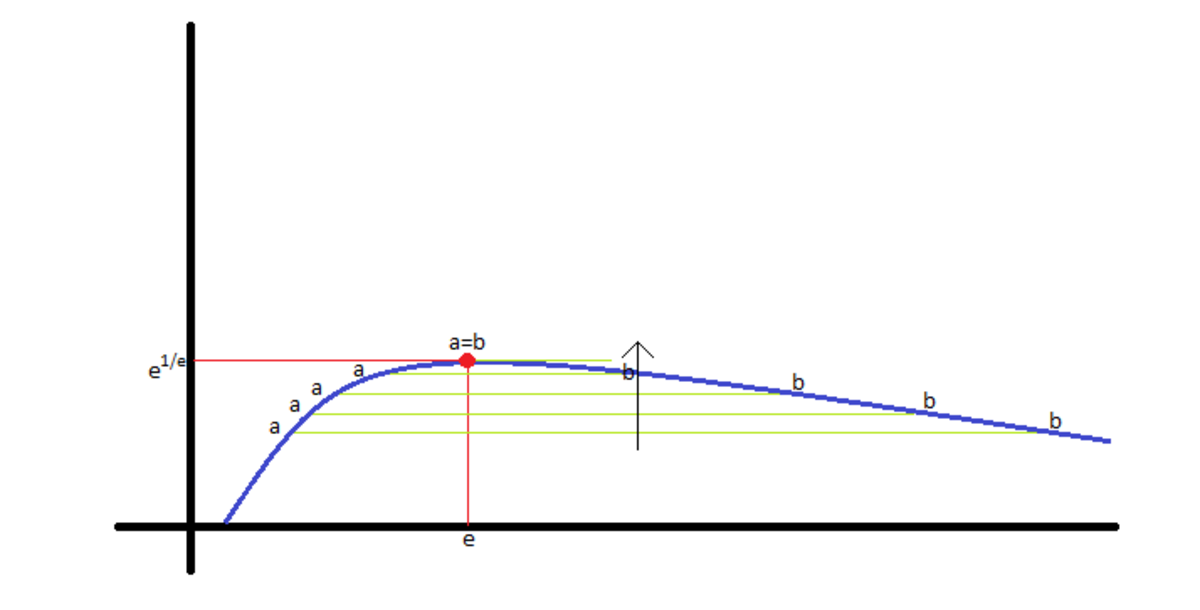Controversial Limit?
Given two different positive real numbers x , y > 0 , x = y satisfying x y = y x , find the following limit :
x → y lim x y .
The answer is 15.154.
This section requires Javascript.
You are seeing this because something didn't load right. We suggest you, (a) try
refreshing the page, (b) enabling javascript if it is disabled on your browser and,
finally, (c)
loading the
non-javascript version of this page
. We're sorry about the hassle.
2 solutions
Nice method,i am stunned
We begin by observing the graph of the function x 1 / x for x > 0 .
Differentiating the function and equating to zero gives x 1 / x ( x 2 1 − ln x ) = 0 ⟹ x = e
We can verify this is the only point of maximum of this function for x > 0 . Hence, x 1 / x is increasing for 0 < x < e and decreasing for x > e .
We can thus conclude that ∃ 0 < a < e and b > e such that a 1 / a = b 1 / b ⟹ a b = b a . Moreover, the line segment joining the points on the curve x 1 / x at x = a and x = b has zero slope since x 1 / x ∣ x = a = x 1 / x ∣ x = b , i.e., have the same y-coordinate.
As the line segment joining
a
and
b
is gradually vertically ascended, it ultimately becomes tangent to the curve
x
1
/
x
at
x
=
e
(as it is the point of maxima).
 This illustration is not the exact graph. Intended just for the sake of reasoning.
This illustration is not the exact graph. Intended just for the sake of reasoning.
Likewise, we conclude in the statement of problem that if a → b satisfying a b = b a then a → e , b → e . Hence, the value of the limit is e e = 1 5 . 1 5 4 .
Let y = t x for some positive number t .
Then the given equation becomes
( t x ) x = x t x .
Raise both sides to the power x 1 and divide by x to get
t = x t − 1 .
Now we have parametric expression for x and y
x = t t − 1 1 ,
y = t t − 1 t .
Since t = x y , t approaches 1 when x approaches y .
We can show both x and y approaches e when t approaches 1 using simple substitution.
x → y lim x = t → 1 lim t t − 1 1 = s → 0 lim ( 1 + s ) s 1 = e
x → y lim y = t → 1 lim t t − 1 t = s → 0 lim ( 1 + s ) s 1 + 1 = e
Thus, we can evaluate the limit as
x → y lim x y = e e = 1 5 . 1 5 4 . . .